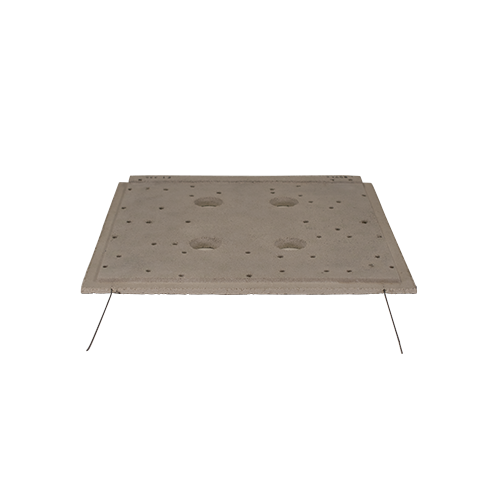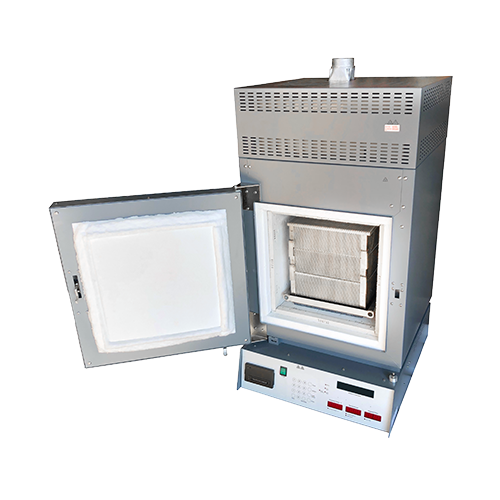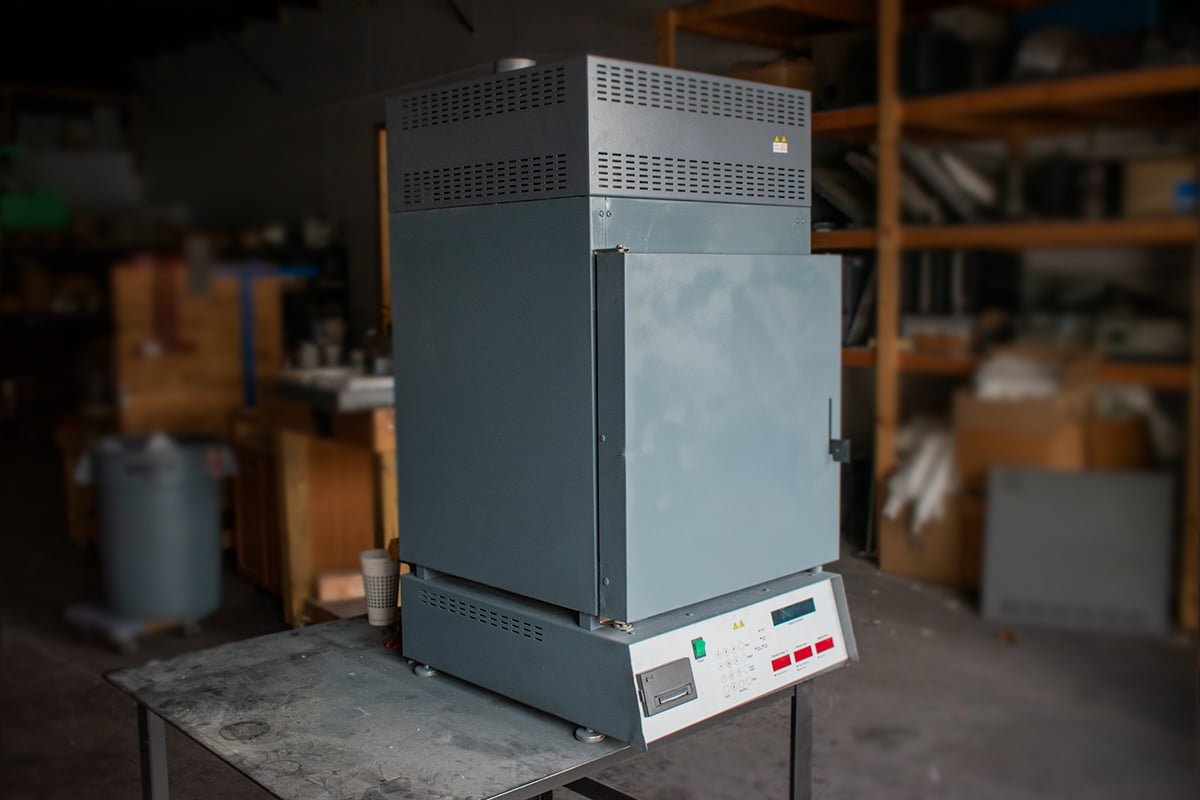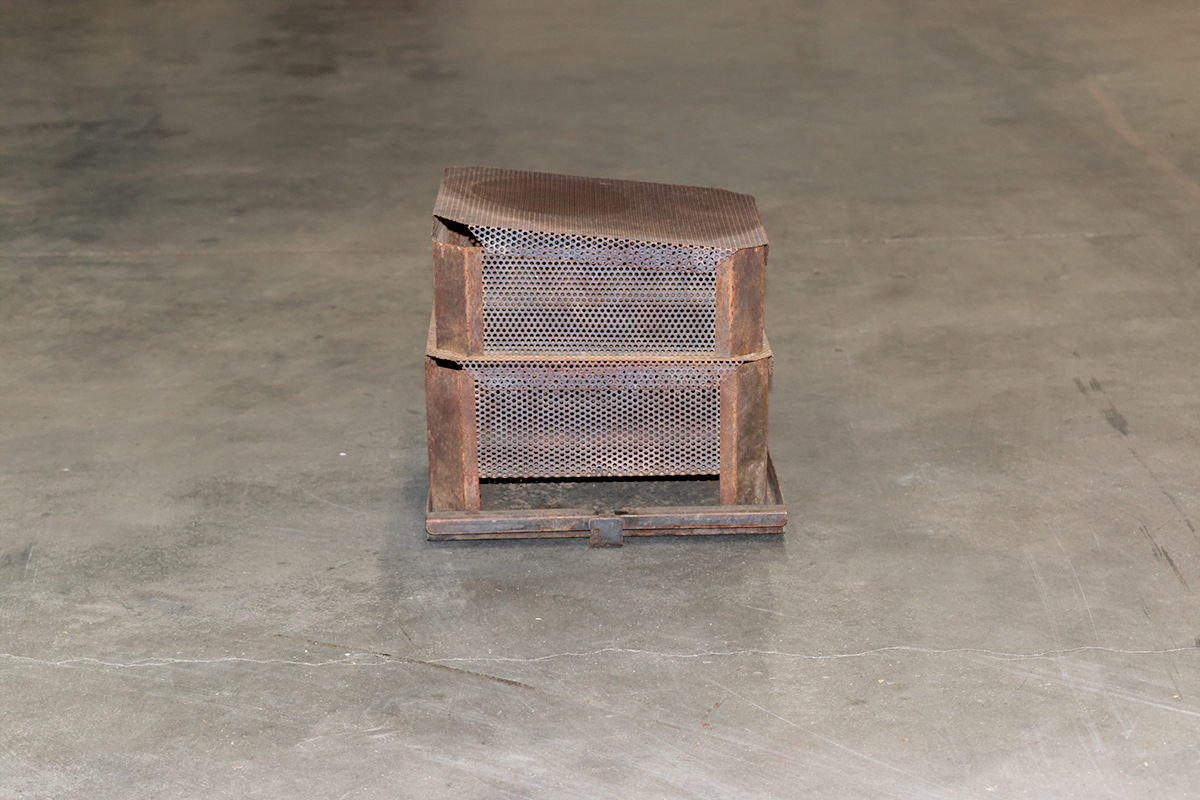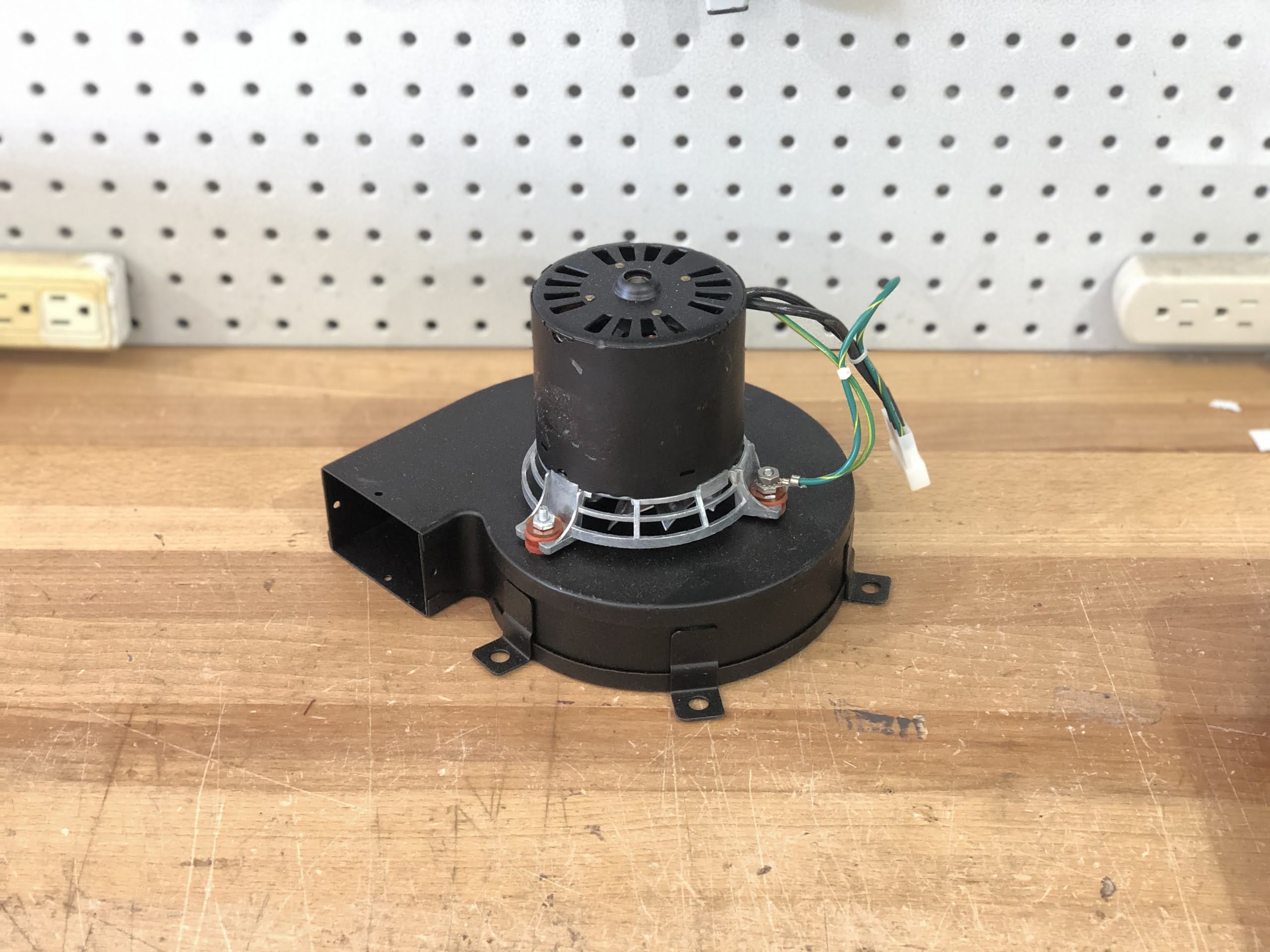Good NCAT Maintenance: The 10 Simple Commandments, Part 1
“NCAT maintenance”, Mike said matter of factly.
“What?” I said because his statement came out of nowhere.
“Do a blog on NCAT Maintenance, and call it something cool” Mike was looking at me expecting me to completely understand what was going on. “ Call it the 10 commandments of NCAT Maintenance or something like that.”
“Ok Boss, also its called an article not a blog…”
Ask and you shall receive.
Mike Gordon has commissioned this article for you. Inside there are helpful hints, some culminations of my previous articles, and useful theory. Please feel free to share this article with anyone who needs it.
The NCAT Ignition oven has been on the front line of AC content testing since the mid ’90s. Since then, there have been four different models and two series, but the basic function of the oven has always been the same. It heats up an asphalt sample to cause combustion that burns off the liquid leaving behind most everything else.
This guide will be applicable to any model or type of NCAT that you have. It will also be good for any experience level. If you have questions about anything in this guide you can always contact us at [email protected].
The Setra Balance
The first topic is also the whole reason the NCAT works in the first place. The Setra balance is a powerhouse of a scale. Its low latency and thermal protection allow it to stand up to the harsh conditions of the furnace and also display information quickly and accurately.
The oven uses this scale to determine a sample’s weight loss during a burn. When the sample stops losing mass, the NCAT ends the test. That is unless you have set your NCAT to manual mode, then the test never ends.
Key things to look out for
Placement
The placement of the scale and the ceramic tubes is important to ensure your readings are accurate. If the tubes touch the sides of the holes they are seated in, the scale will not display the correct weight.
The Setra is highly sensitive to weight change and will not detect that its sensors aren’t operating correctly. You’ll notice that your scale readings will begin to jump all over the place and will never level out.
To correct this open the door and look at all of the tubes. If any are touching the holes, make sure to move the scale so that there is no contact between the tubes and the NCAT. When you look, you might not see any that are physically touching but there may be one that isn’t centered correctly. Center this tube for the best results.
If everything appears to be ok when you open the door, continue down to the section on elements. There could be another unrelated issue causing your scale woes.
Scale Board
The scale board is paired directly to the silver box at the factory and cannot be used with any other unit. Don’t mix and match or you’ll end up with scales that don’t work.
If you have a lot of NCAT’s it’s best to keep them in the furnace and move them one at a time. I am speaking from experience. I have spent an entire week sorting out mixed up scales.
Hearth Plate
The hearth plate is the slab that your basket sits on inside of the chamber. It is designed to seat into the ceramic tube via the standoffs on the bottom. The standoffs are essential to the scale reading correctly because the hearth plate must sit in the correct position.
Even a small change from where the hearth plate is supposed to sit impacts the scale reading. Unfortunately, this is an issue that you won’t notice right away. The issue will show itself in your test results after a burn.
The Printer
The printed ticket at the end of the test can tell you a lot of useful information. That is as long as you have the paper fed in the correct way. That was a tip, make sure your paper is orientated the correct way. I cannot tell you how many times we have been called out to flip someone’s tape over. It’s very costly and easy to avoid.
There are two printers for NCAT’s currently still in use. One of them is the Seiko printer (Tan in color) and the other is the Martel printer (Black in color). Both print on the same thermal paper size, but the printer bodies are different sizes. Because of this, there are two versions of the NCAT control panel face.
One panel face is cut to the dimensions of the Seiko printer and the other is cut to the Martel dimensions. Always check which printer you have before ordering a new one. We always ask, but other companies might not. If you end up with the wrong printer or faceplate combination, we can correct this for you.
Another common thing that we run into is customers using the incorrect paper type. Either the customers themselves go to an office store and purchase the wrong paper, or there is a supplier out there providing the wrong paper. In either case, you must have thermal paper for the printers to work.
You can tell when you have the wrong paper style because there will be faint or nonexistent writing on your ticket after a burn. This happens because the print head in the printer transfers heat to the paper instead of ink. Therefore, in order for there to be writing, the paper has to react to that heat.
Thermal paper is smooth to the touch with almost no friction. If you are unsure, please give us a call and we will let you know.
Make sure when you order new thermal paper, it comes wrapped or in a box of some kind. We have unfortunately had experience with this. We tried putting paper that had been sitting out into a refurbished NCAT we were working on and we had to peel off almost half the roll to get the printer to work.
The Blower Motor
There is one simple thing, that you can do to prolong the life of your blower motor. Oil your blower motor. Most of the units we run into have allowed their blower motors to get into such a poor state that we have no choice but to replace them. A little bit of oil can make a motor last much longer.
To do this, grab some anderol 465 blower motor oil and place it into the two holes that run alongside the motor casing. After you do this, spin the blower motor for at least 10 minutes to prevent your motor from seizing up. To run your oven without a burn leave your oven door open, turn it on, and then hit start.
The blower motor is so essential to fast burns because it generates the most draft passing through your unit. More draft equals better ignitions although it’s always best to not go overboard. A properly running blower motor is your best chance at perfect burns. Neglecting this can cause your unit to run for much longer than is needed.
In the morning before you turn your oven on (This is for those of you that don’t have your unit set to turn on automatically) test out your motor. Try spinning the squirrel cage and see if it freely spins, or if it feels like it’s catching on something. Also, use a tool and not your finger to do this. I know I don’t have to tell you this, but my lawyers insist that I do…
The Elements
I am finally going to put to bed the issue of which element goes where. I am going to teach you how to tell which unit series you have. And I am going to speak extensively about cracking. This section is important.
Heating elements are the main source of heat in the NCAT oven. Once ignited your sample provides the second source of heat, but until that happens your heating elements are it.
There are 4 heating elements inside of the chamber of your NCAT. The Old series has all of its heating elements, including the afterburner, inside of its chamber. The new series has 4 heating elements inside of the chamber and an additional afterburner element above the chamber.
Old vs. New
There are those out there that claim that the older series units perform better than the new ones. And then there are those that say that the newer series ovens are easier to work with due to their increased chamber space. Our answer to this is, yes.
While our technicians prefer to work on the older series NCAT’s this doesn’t mean that we shy away from the new series. We developed a new triple basket that uses all of the new series’ available space.
The best way to figure out your NCAT series is by looking inside the chamber. See if there is either a silver box or an element at the top. If your NCAT has a silver box, it will contain a coarse ceramic filter inside that looks like that sponged on popcorn ceiling you find in older homes. If you see this basket, you have an older series unit.
Another way to tell your series is by looking at the door of the NCAT with it closed. If the top of the door lines up with the seam between the top cover and the unit, you have an older series oven.
Element Placement
The Old Series
In the old series ( 859 and 945 ), there are 4 elements inside the chamber and a stainless steel filter basket that holds two coarse ceramic filters. When the unit was first produced, there used to be a fine ceramic filter in the mix. This filter would get clogged after a couple of weeks of use and so it became common practice to just use two coarse filters instead of one coarse and one fine.
The orientation of the elements are as follows:
- The bottom element is the 859X2
- The right element is the 859X3
- The left element is the 859X4
- The top element, which sits above the metal basket, is actually the afterburner and it is the 859X1
The orientation is based on you opening the door and looking into the chamber. This means that if you are replacing elements from the back of the unit, the right element will be on the left and vice versa.
The New Series
In the new series (1087 and 1275), there are four elements in the chamber and an additional afterburner element in the top. This was an improvement in the operation of the oven because it made a second filter unnecessary. Because the newer series oven doesn’t have a second filter, it also doesn’t have the same clogging issues as the old series. The downside to this is that you have to vacuum your unit more often.
The orientation of the elements are as follows:
- The bottom element is the 1087X2
- The right element is the 859X3
- The left element is the 859X4
- The top element is the 1087X3
- The afterburner element is 1087X1
The orientation is based on you opening the door and looking into the chamber. This means that if you are replacing elements from the back of the unit, the right element will be on the left and vice versa.
Cracking
The elements exist in a harsh environment. They are heated up to 538°C ( 1000°F ) and cooled down to room temperature almost every day. When a sample ignites those temperature swings are even higher. Not only is cracking going to occur, but it is guaranteed.
The craking mostly exists on the bottom element due to the added weight of all of the other elements on top of it. These cracks are to relieve the stress that happens during heating. If they did not occur your elements would shatter every time you turned your NCAT on.
Acceptable cracking is when the cracks run from the front of the unit to the back. These cracks occur after the first burn of an oven to alleviate stress. We find these cracks to be acceptable because they don’t impact the function of the scale.
Unacceptable cracking occurs when the cracks run from left to right. These cracks can cause incorrect scale readings due to element movement under heat. If you have this problem, you’ll notice that the scale acts weird when the chamber is hot, but when the unit is cool there will be nothing wrong with it.
208v units are unnecessary
I know there are a lot of 208v units out there. I know that the power coming in might in fact be 208v. I am still here to tell you that the 208v NCAT is unnecessary. It should be upgraded to a 240v.
The main purpose of the 208v NCAT was to serve locations that didnt get enough power from the line into their labs. While it does serve that purpose, it does so at a cost. Burn times are lengthened. They take longer to get up to temperature in the morning. The elements cost more, and take longer to deliver because most companies don’t keep them in stock.
In a nutshell, the 208v unit costs time. During heavy production, that time can be extremely costly.
The 240v is much better in almost every application. Shorter burn times, shorter ramp-up, more time and money saved. Luckily the 208v unit can be converted to its 240v counterpart as the only difference between the two is its elements and a few of the components.
But wait, you say, I only have 208v coming into my lab! Well, that can be remedied by the buck-boost transformer that we sell. I say sell because we leave the actual installation of this componant to your electricians as they have a lot more experience with your power environment.
We then go through replacing everything that needs to be changed and fully test your unit’s function. This upgrade should not be attempted by anyone who doesn’t have the years of training that our technicians do. Serious damage can occur not only to your lab, but also to your oven.
We have decided to split this article up into two separate sections. We didn’t want to overwhelm anyone new to the oven, nor did we want you to spend your entire day reading this. After all, time is money.
In the next section we will be discussing the error codes of the NCAT, how to properly transport your unit, why exhaust plays a key role in performance, the intricacies of the coarse ceramic filter, and finally why knowing the ambient temperature is important.
We have spent the last fifteen years working on NCAT’s. They are in our blood, and a lot of the units out there have been personally worked on by our staff. Everyone at Gordon Technical is trained on these units, even our office staff.
If you felt that this information was helpful, all we ask is that you forward this article along to anyone who can find it useful. We want to spread our knowledge to everyone in the industry. It is our hope that by doing so, we will improve the state of our roads in the country, and quite possibly, the world.


